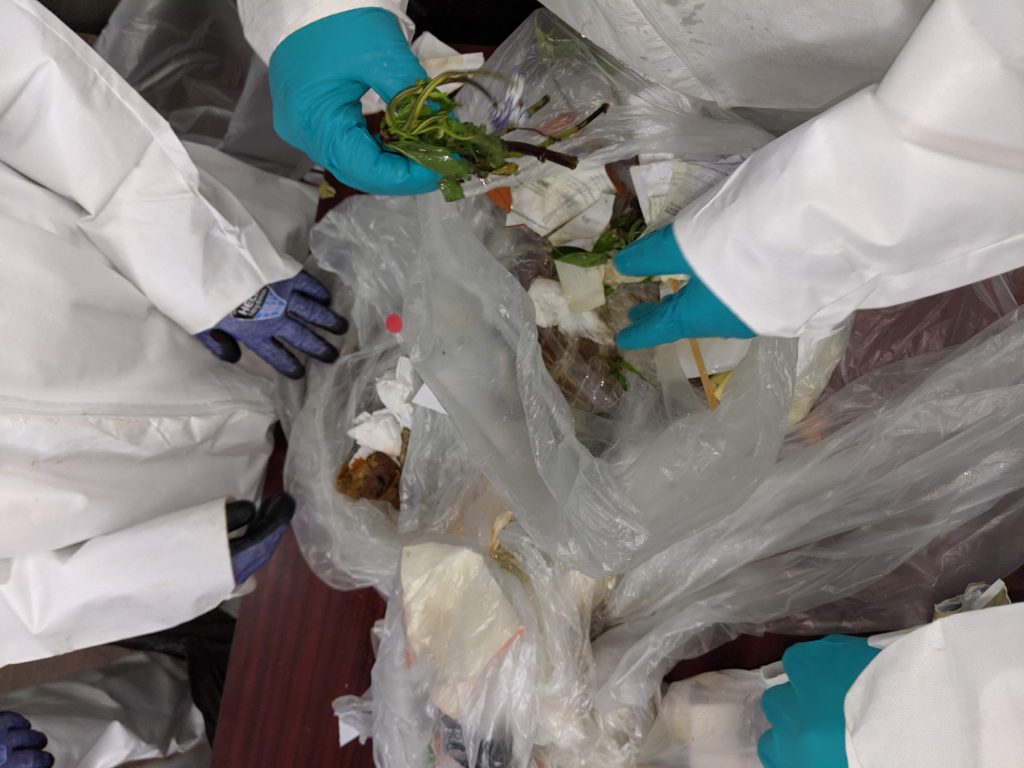
This article originally appeared in QSR magazine, Nov. 2019.
With the holiday season fast approaching, businesses, especially restaurants, will likely begin experiencing more food waste.
Did you know the largest component of most commercial waste streams is organics? A large chunk of that is wasted food. A nationwide survey of over 100 commercial waste audits conducted by Great Forest has revealed that organics comprise an average of 34 percent of what’s tossed in the trash. The EPA reports food waste accounts for 22 percent of all waste in landfills, estimating that more food reaches landfills “… than any other single material in our everyday trash …”
With the holiday season fast approaching, businesses, especially restaurants, will likely begin experiencing more food in their waste streams, which may increase waste costs due to the added weight of heavy organic material. Meanwhile, the USDA reports 11–14 percent of American households experience food insecurity. This means food waste is a national problem that businesses can help address locally by donating surplus, high quality food to the communities they serve.
In fact, diverting food to the needy is one of the key initiatives of the newly announced alliance between three government agencies—USDA, EPA and FDA—and the National Restaurant Association, the Grocery Manufacturers’ Association and the Food Marketing Institute.
But how much of that wasted food can be donated? To find out, restaurants need to conduct a food waste audit.
What Can Restaurants Learn from A Food Waste Audit?
A food waste audit gives businesses the data they need to effectively address their food waste and understand how to incorporate food donations as part of their company’s overall waste diversion program. Food waste audits tell businesses:
- How much food they are wasting.
- The type of food they are wasting, providing crucial data to help understand why food is being wasted, and how to reduce that waste.
- The amount of high quality, edible food that can be diverted from the waste stream and donated to feed those in need.
- Potential handling and storage constraints that can affect food “donatability.”
- The type of organics diversion program that may best address their needs.
How big an impact can businesses make?
Earlier this year, a food waste audit at three select locations of a national fast casual restaurant chain revealed the company could rescue an average of 26.7% of its daily food waste. Without even decreasing the amount of food waste generated, they could see a significant impact.
The audit revealed the proportion of donatable surplus food was consistent across the three audited locations—averaging 19 percent—and that 97.6 percent of all audited surplus food was donatable as defined by food rescue organization Replate. Surplus food deemed donatable included prepared food that was unsold or made in error, and unfulfilled customer orders.
While the restaurant chain has policies and procedures in place to minimize food waste, the program did not previously distinguish between high quality, donatable surplus food and spoiled or otherwise inedible surplus food. By selecting key store locations, the audit helped the company understand the need and feasibility of diverting surplus food from an organics collection program to a food donation program.
The audit provided the data the company needed to move forward with a planned regional donation program, and to estimate their impact nationally. If the results are multiplied across all locations around the country, they could potentially put thousands of pounds of food back on the table each day. That would make a significant impact not only on the chain’s operations, but also in many lives.
Return on Investment
Addressing food waste simply makes good business sense. With increasing waste disposal costs, many businesses pay a high price to dispose of heavy organic material. A recent study showed that businesses can save $7 for every $1 invested in food waste reduction.
The ReFed Roadmap estimates that restaurants and foodservice businesses in particular can tap into a large profit opportunity of $1.6 billion annually, chiefly from “improved Waste Tracking & Analytics, reflecting the operational inefficiencies in food purchasing and kitchen prep.”
In addition, the goodwill that food donations can generate in the community is immeasurable. Positive impressions from clients, local vendors, employees and their families aid reputation, which can boost business and retention rates.
And as revealed in the restaurant chain’s food waste audit, donating edible food is an easy way to make an impact. The restaurant was able to divert an estimated 26.7% of its daily food waste through a donation program, even if their food waste generation remained unchanged.
How Does It Work?
Once a food waste audit identifies the amount of food that may be donated, restaurants can connect with food rescue organizations in their area to arrange for a pickup, usually for a small fee. Depending on their needs and the food rescue services available in their community, businesses should be able to schedule on-demand or regular pickups. Tools such as this food rescue locator can help.
Who Benefits from Food Waste Audits
In general, every type of business can benefit from a food waste audit because every commercial operation or building has potential food waste, whether donatable or not. This includes excess food from cafeterias, catered office events, or from employee lunches. But food waste audits are essential for restaurants and other food-related businesses. The amount of wasted food restaurants generate can significantly impact their bottom line, and the lives of those in need.

